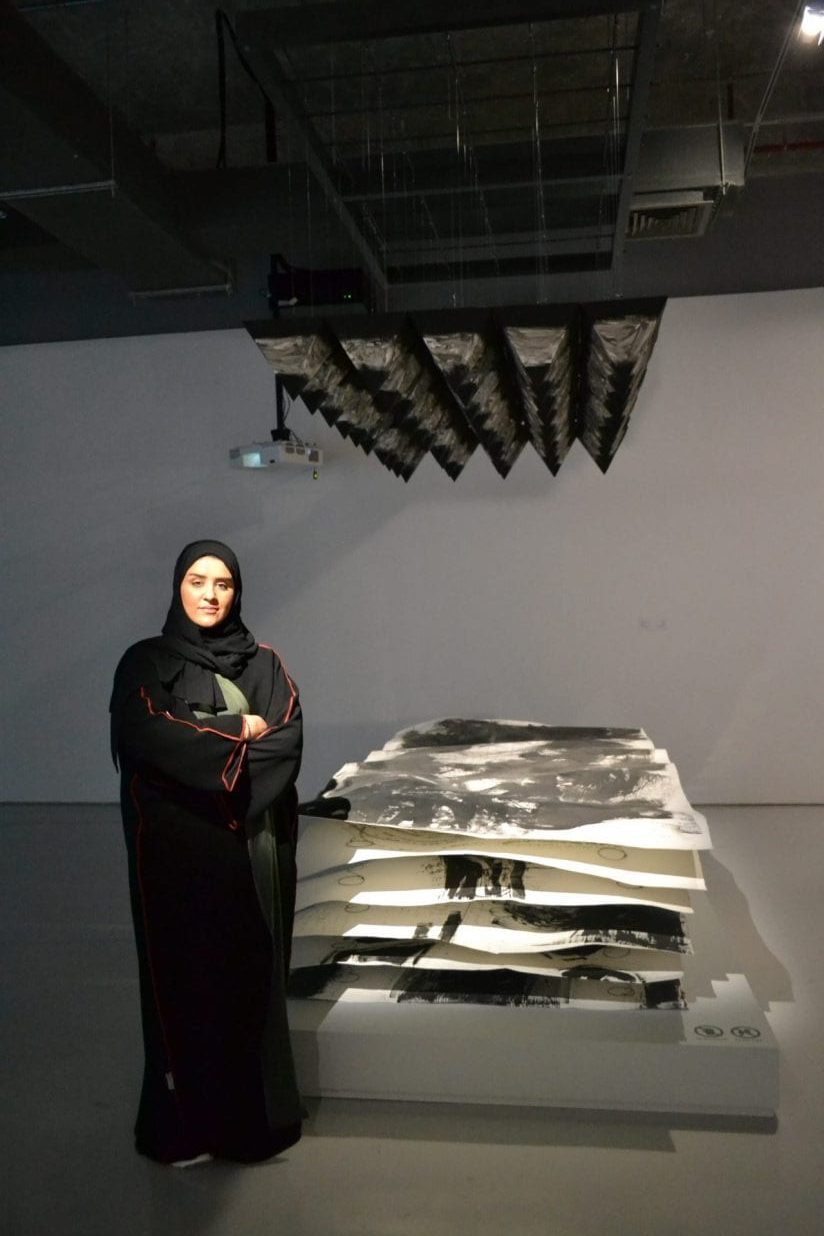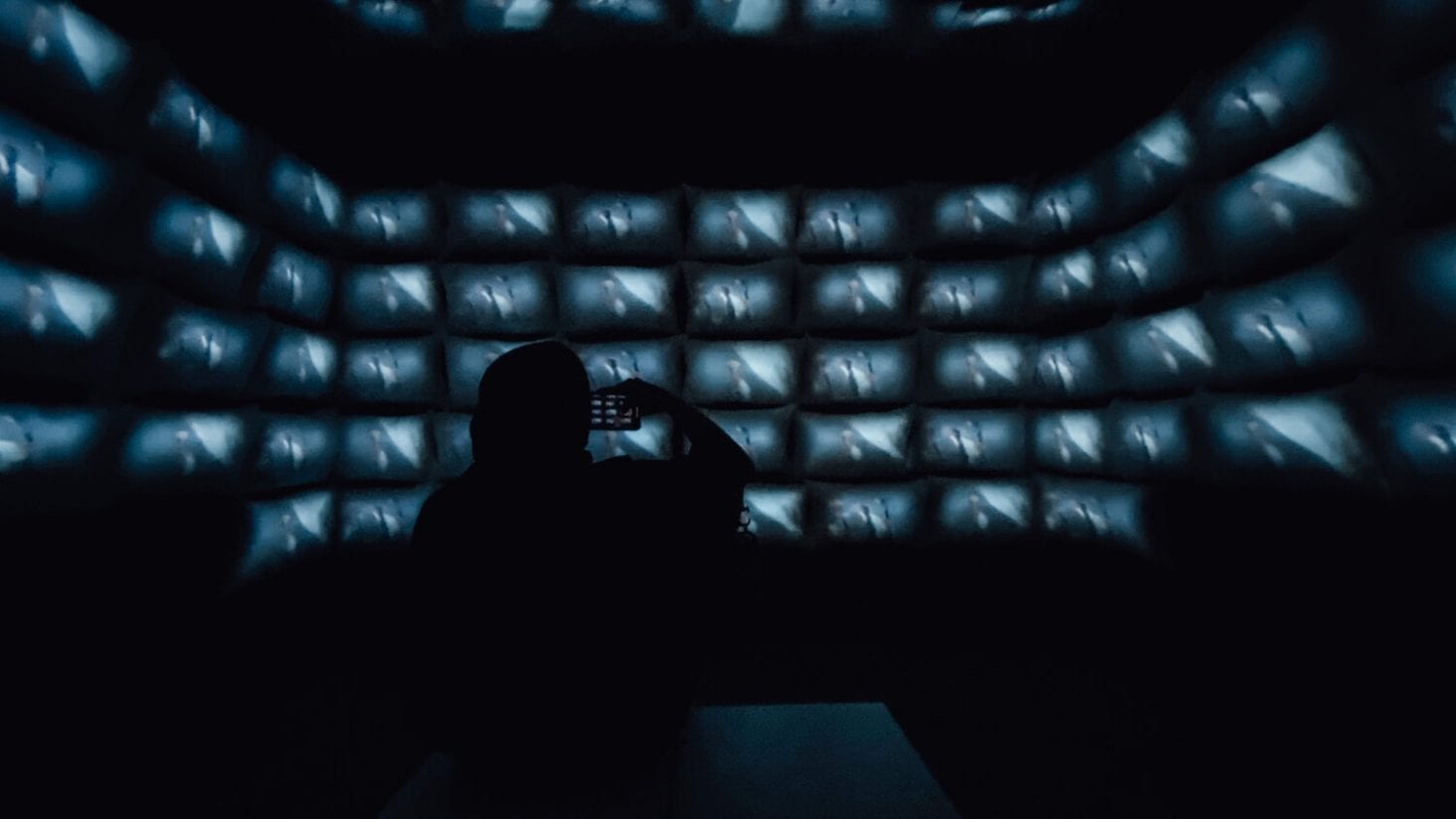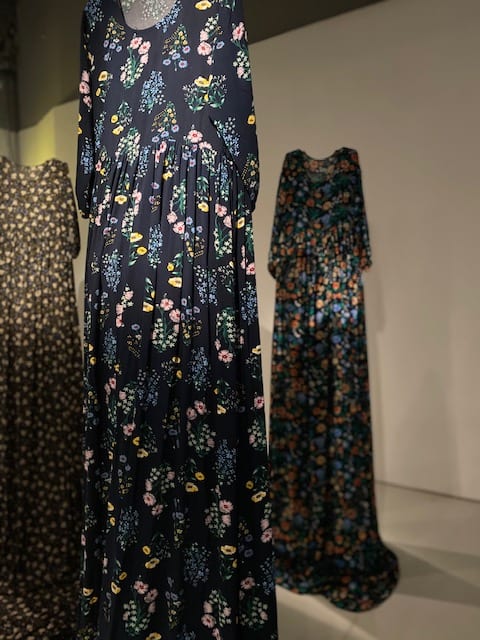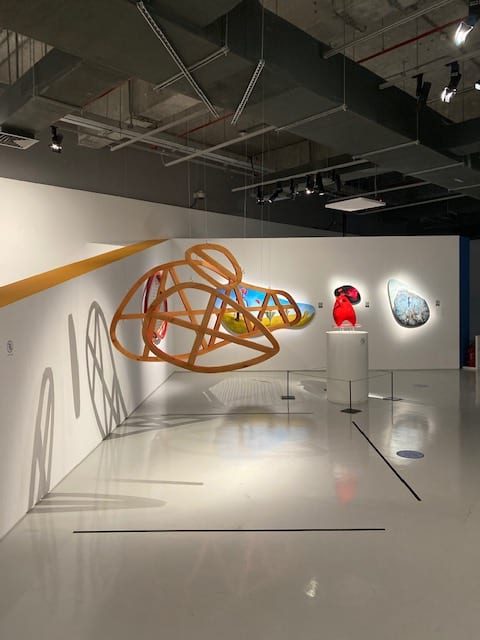The Fire Station Residency Programme Gets Imaginative
In its fifth year, The Fire Station Artist Residence programme has shone light on the best works of Qatari and expat talents, each of whom have touched on topics relevant during lockdown and otherwise, from memories to relationships with their earlier surroundings and relatives, all of which gain much more significance with introspection and self-exploration. By Sindhu Nair
The Fire Station: Artist in Residence programme in its fifth year is called Grey Times and is centred on the current context of the global outbreak of COVID-19, characterised by uncertainty and unprecedented challenges. It could be the result of longer duration allocated for the artists to finish their work of art and the extended periods of lockdown which unleashed latent creativity as a result of which this year’s exhibition seems to be even high on creative explorations and unusual with imaginative works that makes the visitors pause and want to know more about each installation and art work before they move on to the next. It is difficult not to be entranced by the hanging Jellabiyas with a mesmerising voiceover or be pulled into the room of pillows and the most interesting of them all, the curtain of dreams that seems to beckon the visitors to engage with. Art in multiple forms and depth is explored and experienced within the Fire Station and is a fine testimony of the initiatives taken by Qatar Museums.
It is difficult not to be entranced by the hanging Jellabiyas with a mesmerising voiceover or be pulled into the room of pillows and the most interesting of them all, the curtain of dreams that seems to beckon the visitors to engage with. Art in multiple forms and depth is explored and experienced within the Fire Station and is a fine testimony of the initiatives taken by Qatar Museums.
The initial plan for this year’s Artist in Residence Programme — curated by Dr. Bahaa Abudaya and Saida Ali Al-Khulaifi — was for artists to engage with the relationship between the visual arts and literature, according to the organisers. However, the pandemic meant artists were unable to embark on creative exploration at the Fire Station’s studios but rather had to carry out their respective conceptual journeys in the confines of their homes.
Commenting on the exhibition, Dr. Abudaya, said: “With the current situation, people have been forced to make drastic changes to their lifestyle and livelihood. Within this challenging context, we have invited artists to embark on a journey of self-exploration and examine the relationship they have with their immediate surroundings and the external world during a global pandemic.”
The artists showcasing their works as part of the 2020-2021 Artist in Residence Programme includes: Aisha Al-Muhannadi, Ameera Al-Aji, Ebtesam Al-Hothi, Hadeer Omar, Haytham Sharrouf, Jaser Alagha, Latifa Al-Kuwari, Majdulin Nasrallah, Mariam Rafehi, Maryam Al-Maadhadi, Mashael Al Hejazi, Maysaa Almumin, Muna Al-Bader, Naila Al-Thani, Noor Yousef, Suzana Jouma, Hind Al Saad and Ameena Al Yousef.
SCALE looks through some of the most interesting pieces of art work of the 18 artists work displayed at the Fire Station Museum.
Jaser Alagha
Like A Sieve
 This was by far by most engaging piece of work. Jaser is a Palestinian-Australian filmmaker and multimedia artist who is constantly exploring conceptual and traditional storytelling through different media. With the artist explaining the process, the installation feels more real as one interacts with the maker and the installation. Jaser has used curtains as the protagonist, the shelter of spaces, the witness of most intimate memories. He has used the curtains as a screen, to portray memories. Jaser feels that memories are details that one wishes to portray or remember. The curtains move about slowly within the rotors, swaying with the depth of emotions and at times engulfing us within its folds, taking us on a journey of memories. The wind from rotating fans projected on the curtain seems as realistic within the folds of the curtain.
This was by far by most engaging piece of work. Jaser is a Palestinian-Australian filmmaker and multimedia artist who is constantly exploring conceptual and traditional storytelling through different media. With the artist explaining the process, the installation feels more real as one interacts with the maker and the installation. Jaser has used curtains as the protagonist, the shelter of spaces, the witness of most intimate memories. He has used the curtains as a screen, to portray memories. Jaser feels that memories are details that one wishes to portray or remember. The curtains move about slowly within the rotors, swaying with the depth of emotions and at times engulfing us within its folds, taking us on a journey of memories. The wind from rotating fans projected on the curtain seems as realistic within the folds of the curtain. Jaser has worked within institutions like Aljazeera, and he wanted to explore diverse mediums of storytelling, of recounting memories and seems successful in bringing on the effects to connect to the viewer.
Jaser has worked within institutions like Aljazeera, and he wanted to explore diverse mediums of storytelling, of recounting memories and seems successful in bringing on the effects to connect to the viewer.
Ameera Al Aji
Remembering House No 10
Ameera Al Aji’s work of art seems mysterious enough to provoke questions and when explained they come with a depth that leaves one wanting to find out more. Most of her work is the product of her emotions, they are deeply personal and is the artists exploration into herself as she tries to understand her own feelings and the art is a result of this exploration. Ameera is a conceptual artist who holds an MFA in Fine Arts. Her work is largely based on her memories of her childhood home, House No: 10, situated ain the Garaffa area, and her revisit and the process of understanding her feelings surrounding this is equally painful as it is joyous. “A mixed feeling,” she says.
Ameera is a conceptual artist who holds an MFA in Fine Arts. Her work is largely based on her memories of her childhood home, House No: 10, situated ain the Garaffa area, and her revisit and the process of understanding her feelings surrounding this is equally painful as it is joyous. “A mixed feeling,” she says.
“I always felt I was missing something, when I came to Doha during my MFA days. I started going within, trying to understand why I was being emotional and sad. I circled down to a period in 1984 to a house that we stayed together with my grandparents, which seemed to be the trigger of my emotions. A house which at that time had no numbering and was just a “House No 10”, an existing house that is now inhabited by others. I visited the house in 2017, after 25 years, and I was shocked, at the change that was evident. It was a shared accommodation and was not in the condition we had left it at. I felt anger, shock and even confusion at the way my memories seemed to have been destroyed but later on I went back and started developing friendly relationship with those who are staying there, the current inhabitants, trying to understand and to make peace with my longings. I made interactions, showed them how the house was before, took them all through my works and made some progress in calming my emotions,” explains Ameera.
But what bothered her most, was that the area where her parents had their bedroom with her bed to a corner in that room, was closed for construction and so she couldn’t access that most important part of her memory. And the corner is recreated artistically at Fire Station, the bed is now a bunch of canvases that carry the weight of notations, symbolic of the stories told by her mother, with references to her beloved late grandfather. The canvases are supported on springs and seem to be floating, giving the impression of a dream, or perhaps memories, while the pyramid shapes framing the bed, according to Ameera, are her signature shapes, a form that she has adopted as her own and recreated multiple times in various connotations.
And the corner is recreated artistically at Fire Station, the bed is now a bunch of canvases that carry the weight of notations, symbolic of the stories told by her mother, with references to her beloved late grandfather. The canvases are supported on springs and seem to be floating, giving the impression of a dream, or perhaps memories, while the pyramid shapes framing the bed, according to Ameera, are her signature shapes, a form that she has adopted as her own and recreated multiple times in various connotations.
Fragmented Realities
Hadeer Omar
 Fragmented realities is a collectively projected, immersive experience by Egyptian time-based media artist, designer, and educator, Hadeer Omar. Her work explores cultural identity and memories, the self, and narratives artfully through immersive XR media and technologies, graphics, photography, and video art installations. Her installation, housed within a room is basically a room full of pillows, taking us on a trip through dreams, which according to Hadeer is a source of inspiration.
Fragmented realities is a collectively projected, immersive experience by Egyptian time-based media artist, designer, and educator, Hadeer Omar. Her work explores cultural identity and memories, the self, and narratives artfully through immersive XR media and technologies, graphics, photography, and video art installations. Her installation, housed within a room is basically a room full of pillows, taking us on a trip through dreams, which according to Hadeer is a source of inspiration. “However, they cannot be controlled, reversed, repeated, saved, or replayed. Dreams may lead one to question themselves or their surroundings. Symbolism takes on an extensive part of the search for meaning in our dreams. Our perceptions, interpretations, and senses guide us to resolutions that create an order to the boundless chaos. The experience is individually unique but universal in its elements. It is built using pictorial and oral fragments; emotions and memories; time and space,” she says.
“However, they cannot be controlled, reversed, repeated, saved, or replayed. Dreams may lead one to question themselves or their surroundings. Symbolism takes on an extensive part of the search for meaning in our dreams. Our perceptions, interpretations, and senses guide us to resolutions that create an order to the boundless chaos. The experience is individually unique but universal in its elements. It is built using pictorial and oral fragments; emotions and memories; time and space,” she says. Her work explores not just her dreams but how it works in different minds, and she documents all the dreams and tries to map them put with the emotions and experiences and her entire creating process is but a documentation of the space and the act. From the process of stitching the pillowcases at home with her aunts and mother, to the process of assembling it and noting the dreams are documented to further understand the process of dreams.
Her work explores not just her dreams but how it works in different minds, and she documents all the dreams and tries to map them put with the emotions and experiences and her entire creating process is but a documentation of the space and the act. From the process of stitching the pillowcases at home with her aunts and mother, to the process of assembling it and noting the dreams are documented to further understand the process of dreams.
She Sits by the Water Combing her Hair
Maysaa Almumin
Maysaa Almumin is an architect and a filmmaker and she has worked at the Kuwait Pavilion for the Venice Architecture Biennale in 2014. She has also exhibited her own work with Architects Independent at the Fire Station, Doha in 2020. Her work is an intense portrayal of love and longing for travel, instigated by lockdown separation that paved way to Maysaa thinking more about the implications of travel for a generation before. Her separation from her husband in Finland during lockdown made her look at what travelling meant to her grandmother; how it was about separation rather than about the joy of finding new places as it is now perceived. Maysaa found that travel was more about sorrow and separation for that generation and 40 years later, she seemed to find sense in what her grandmother used to tell her.
Her work is an intense portrayal of love and longing for travel, instigated by lockdown separation that paved way to Maysaa thinking more about the implications of travel for a generation before. Her separation from her husband in Finland during lockdown made her look at what travelling meant to her grandmother; how it was about separation rather than about the joy of finding new places as it is now perceived. Maysaa found that travel was more about sorrow and separation for that generation and 40 years later, she seemed to find sense in what her grandmother used to tell her.
“Though I loved my grandmother and the stories she shared, I could never relate to it. Now after 40 years, everything made more sense to me,” she says. The mixed media installation is Maysaa’s tribute to her grandmother as she puts herself in that space, grieving for those not near her, almost similar to the conditions lockdown has inflicted on some who were separated from families.
The mixed media installation is Maysaa’s tribute to her grandmother as she puts herself in that space, grieving for those not near her, almost similar to the conditions lockdown has inflicted on some who were separated from families.
Maysaa recreated the scene of the past, through the dresses, or Jellabiyas that were stitched by her grandmother who was a seamstress, as her grandmother sang an old nursery rhyme about separation and about people that have long gone. The haunting recital as one pauses near a flowing traditional gown worn by women, stays long after one leaves the exhibition space, longing and a deep sense of melancholy imbedded in rhyme.
Muna Al Bader
A Move to the Blue
 Muna Al Bader is a well-known artist in Qatari circles whose art form is a part of major exhibitions and here she has explored a colour that everyone seems to be affixed on but can never quite capture it in its right depth. She says that blue is the colour that is hard to find in nature, and a colour that the ancestors used to seek out and it was this colour that evoked joy in the olden days as it was a colour of inspiration. The music that the Qatari pearl divers used to enjoy singing together while on their pearl diving process was evoked by the colour blue and here through her canvases and her installations, she intends to find the connect between the colour and the emotions attached to it.
Muna Al Bader is a well-known artist in Qatari circles whose art form is a part of major exhibitions and here she has explored a colour that everyone seems to be affixed on but can never quite capture it in its right depth. She says that blue is the colour that is hard to find in nature, and a colour that the ancestors used to seek out and it was this colour that evoked joy in the olden days as it was a colour of inspiration. The music that the Qatari pearl divers used to enjoy singing together while on their pearl diving process was evoked by the colour blue and here through her canvases and her installations, she intends to find the connect between the colour and the emotions attached to it.
Suzana Joumaa
Mind Lapse
 Suzana Joumaa is a multi-disciplinary artist, and an interior architect. Colourful and stark, Suzana’s work is a journey of her subconscious mind, her experience and the experience of anyone who has experienced time in a war-torn country. Her artwork is intense and relies heavily on symbolism and is a mix of contemporary art and surrealism.
Suzana Joumaa is a multi-disciplinary artist, and an interior architect. Colourful and stark, Suzana’s work is a journey of her subconscious mind, her experience and the experience of anyone who has experienced time in a war-torn country. Her artwork is intense and relies heavily on symbolism and is a mix of contemporary art and surrealism.

Haytham Sharrouf
Form Follow Fiction
 One of the most hard-working artists among the residency programme, Haytham took each of his projects quite personally and gave them that extra flair which makes his work shine through. What is exhibited within the Fire Station is just a small part of the entire body of work Haytham has created within the residency.
One of the most hard-working artists among the residency programme, Haytham took each of his projects quite personally and gave them that extra flair which makes his work shine through. What is exhibited within the Fire Station is just a small part of the entire body of work Haytham has created within the residency. ‘The Prophet’ is an installation that creates a modern-day homage to the love story between the famous poet Khalil Ghibran and May Ziadeb, two lovelorn beings who were separate yet united through thoughts and letters and intense longing represented through metal beams connecting their meta-physical forms.
‘The Prophet’ is an installation that creates a modern-day homage to the love story between the famous poet Khalil Ghibran and May Ziadeb, two lovelorn beings who were separate yet united through thoughts and letters and intense longing represented through metal beams connecting their meta-physical forms.
Ara which is another form that he plays with is his interpretation of light and its importance in life which he has tried to relate to the importance of physical touch and the lack of it which was characterised during the lockdown put the focus back on how important it is to the wellbeing.






